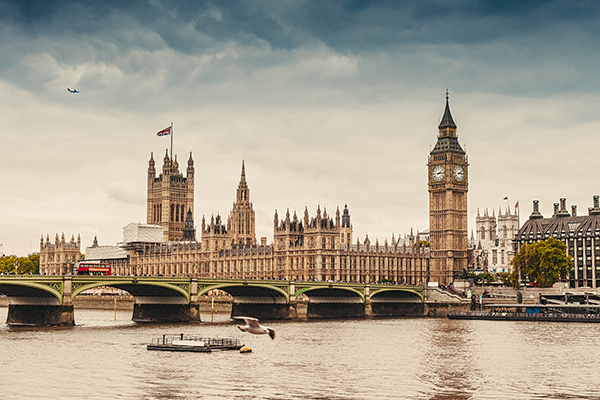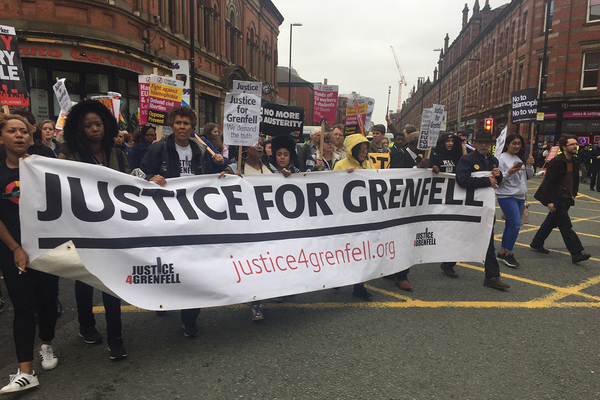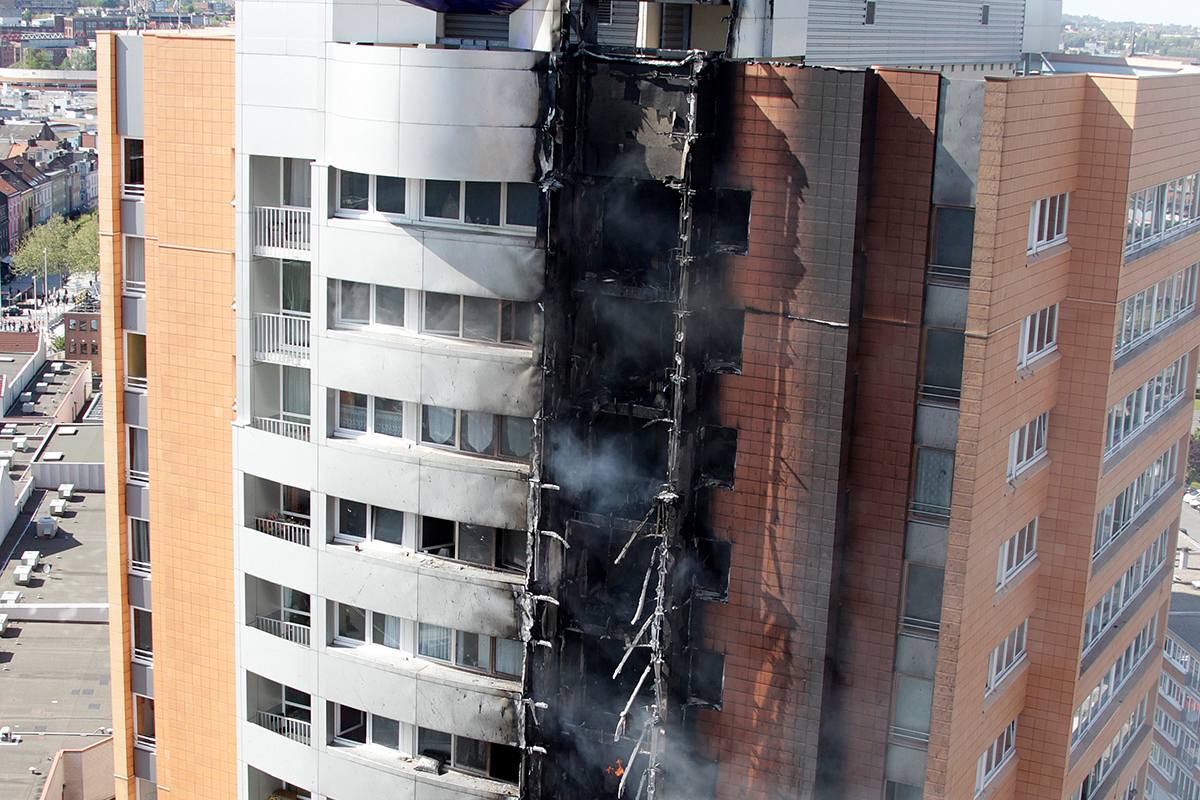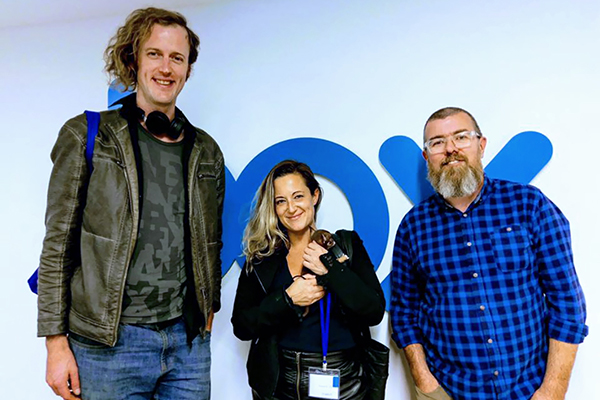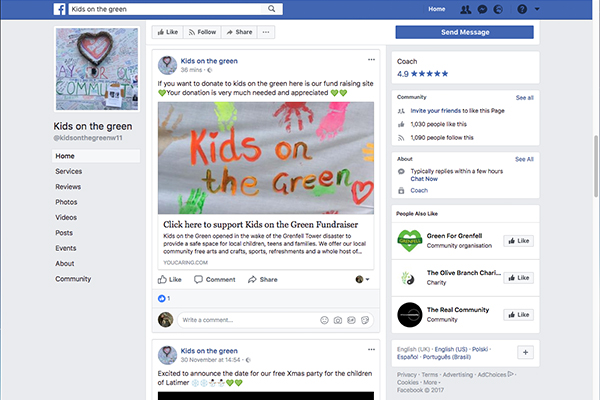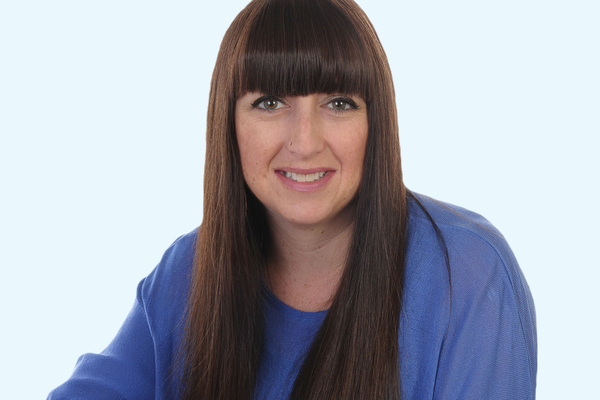Circus therapy for children affected by Grenfell
A group offering circus activities for children affected by the Grenfell tragedy is bringing the community together and providing relief from trauma. Jessica Bateman finds out more. Illustration by Clare Nicholas
Tucked away down a side street off west London’s Latimer Road, a group of children are gathered in a warehouse space for a hula-hooping lesson, shrieking and laughing as they dance and jump around.
The brick walls are decorated with their drawings, and in the next room their parents sit and chat or dish out drinks and biscuits.
Outside, the blackened remains of Grenfell Tower loom over the horizon.
This is Kids on the Green (KOTG), a play space-cum-mental health provision set up by local volunteers in the wake of the Grenfell disaster. Its aim is to provide trauma relief through play and theatre to families affected by the fire, give children from the local estate a much-needed leisure space, and promote community cohesion and bonding. Having started with just a blanket and a table on the Norland Open Space park in Ladbroke Grove, it has now moved into an indoor venue where it will continue throughout the winter.
“We’re dealing with a very traumatised community and it’s getting worse, not better,” says founder Zoe Levack, 39. “Our aim is to be a resource for local people that’s constant, familiar and provides a distraction.” As well as families who lost their homes in the disaster, the project supports those traumatised through witnessing it or losing friends. It also provides a much-needed community space in a neighbourhood where public resources have been seriously depleted.
A professional youth worker, Ms Levack is based in Shepherd’s Bush but has worked around the Ladbroke Grove area for many years. Prior to Grenfell she spent a year leading an emergency response team following a gang-related murder on Portobello Road. “It was very intense, so I was plannng to take a six-month break from youth work to get my energy back,” she recalls. “Then this happened.”
Ms Levack describes the local area the day after the tragedy as “like a warzone”.
“I went for a walk at lunchtime and was horrified at the chaos,” she recalls. “There were so many shell-shocked children walking around unaccompanied, holding pictures of their missing friends. There was no supervision, as the adults were all dealing with their own horror.”
Aware there was a park nearby she could use, Ms Levack put a call-out on social media for any mental health workers or Disclosure and Barring Service-checked child practitioners who might be free to volunteer. “Within a few hours I had a child psychotherapist, a primary school teacher, a sports coach, some packets of crisps and bottles of water, a table and some blankets,” she explains. “Then I set out on my bike to find kids and bring them to the green. After that, we were there every day, working 14.5-hour days. Our volunteer base grew, as did the number of families visiting.”
Three days later she teamed up with Off Road Circus, a social circus that offers therapeutic play for children in disaster zones. “Like a lot of people I went down to the area to try and volunteer but it was very chaotic,” says its founder, 28-year-old Amy Guayo. “I walked under the Westway flyover and found a piece of paper with Zoe’s number on it, called her up and told her I did circus and wanted to help.”
Ms Guayo assembled a team of performers to do daily workshops such as hula-hooping, juggling and the spinning top game diabolo. “It just grew and grew because we realised there was a huge lack of support available. It became this safe haven where families could go and grieve.”
"We realised very quickly that circus was a fantastic therapy for children", Zoe Levack
Ms Levack says: “We realised very quickly that circus was a fantastic therapy for children. The effects have been profound. One little girl had lost three of her friends and wasn’t talking, and her mum was getting very worried about her. When she came to us, the first time she started to open up was when she was hula-hooping.”
Ms Guayo, who started Off Road Circus in 2013 as part of a community development project in West Africa and has since taken it to refugee camps in Europe, believes there are several reasons behind the effectiveness of circus at tackling trauma. “First, it provides a huge amount of distraction from whatever’s going on,” she says. “It also lets children release energy and endorphins. We work with kids who are struggling to sleep at night after traumatic events and parents regularly tell us they’re sleeping much better after releasing their energy through circus.” The repetitive movements of circus activities also induce a state of ‘flow’, a meditative state that is thought to help ease anxiety and depression.
Ten-year-old Lola, who has been going to KOTG since the second day, says it “cheered her up” after Grenfell. “I was really sad the day after but KOTG took my mind off it,” she tells Inside Housing. “I had never hula-hooped before but then I came back and I could do it for hours.”
Zoe Levack with two of the team
Other volunteers offering their services include art therapists, children’s entertainers and mental health practitioners such as specialised grief counsellors. Ms Levack says that KOTG’s success has been in disguising a mental health provision as play provision. “We do a lot of work with the Muslim community, where mental health is quite stigmatised,” she explains. “Some people who visit us have never even spoken to their GPs [about psychological distress] before. We’ve uncovered issues such as post-natal depression in the community which were going untreated.”
Families visiting the project are vocal about what they perceive as a lack of services that KOTG has had to step in and fill. Michelle Widdrington, 28, who lives in a Notting Hill Housing property in nearby St Catherine’s Way, says she has only recently been offered psychological support for the trauma her sons Elliot, eight, and Kalil, four, endured. “We were up all night with the fire and they had to go to school while it was still burning,” she recalls. “Over the summer my eldest started displaying a lot of anger issues. It got to a point where I just didn’t know what to do with him.”
Her sons’ father, Ishmael, was born in Grenfell and lived there for 25 years, meaning the disaster had a huge emotional impact on the family. “We’ve changed, which has made [our children] change,” she explains. “At the beginning I felt like it was just the community supporting everyone. It was only much later that we started hearing about where we could go for counselling. [KOTG] has been somewhere for us to go. The activities have really helped the kids, they’ve let them express their emotions.”
The Royal Borough of Kensington and Chelsea says it has invested £2.5m in mental health provision following Grenfell and that 330 people have been screened for post-traumatic stress disorder. However, health service professionals have estimated around 11,000 people may need help. But the council hasn’t funded KOTG. The Urban Partnership Group, which runs a local youth centre, provided about £5,000 of funding, and the project has received £10,000 from a network of organisations that provide money to civil society projects, called London Funders.
The warehouse space, which it has use of until April 2018, has been provided for a low cost by visual arts charity Artcore. “It’s shocking that the council hasn’t provided money for groups like this to exist, to be here as a resource for the community,” she says.
Kids on the Green’s Facebook page
As well as psychological relief, Ms Guayo believes circus can help by giving children a goal to work towards. “Having a long-term project gives them something to look forward to rather than focusing on what’s happening around them,” she says.
KOTG had its own float at Notting Hill Carnival this year, on which many of the kids performed. “This is a carnival community, and this year was the Grenfell Carnival,” says children’s entertainer William Wiles, 39, who has been volunteering with KOTG since the beginning and spearheaded the float. “We represented the experiences of this community over the past few months, and remembered those we’ve lost.
“A lot of people round here feel forgotten about. Carnival is the one time of the year where the community really gets to occupy its own home, but every year they’re wondering whether it’s going to be the last carnival. The parade is a symbol that we live here and we belong here.”
Click here to read more about our fire safety campaign
The fact that Grenfell residents warned of the risks in their building, but were not listened to, has been written about at length. And according to the families that use KOTG, this sense of feeling ignored is one they’re all too familiar with. “There’s been such a systematic depletion of the resources that allow lower-income people to live around here,” Mr Wiles continues. “The local primary school, college and library were all closed down. The general funding for community space has gone down. There’s an indifference to making a living place that’s sustainable. The story of the tower is consistent with that.”
Local mum Cassie, who has been volunteering with KOTG since the beginning, echoes his words. She lives in a tower block opposite Grenfell with her five children, who between them lost 11 friends in the fire. “You need to have lived round here to really understand what [having KOTG] means,” she says. “The government has shut so many of the children’s services over the past few years – and I mean a lot. So to have something like this up and running in the name of Grenfell is wonderful. Everything has been turned upside down for these kids and this has given them a bit of normality again.”
She finds it hard to hide her anger when asked what she thinks of the local authority’s response to the disaster. “I can’t go into that right now,” she sighs. “We’ve shown that we don’t need them. The community has stepped up and done it ourselves. It’s helped a lot of people come together. I think something like this is needed in every community – kids are the next generation, they’re our future.”
“A lot of people round here feel forgotten about," William Wiles
When contacted, The Royal Borough of Kensington and Chelsea says it has invested “tens of millions of pounds” in the area and that its lead member for housing and the leader of the council have been attending public meetings and talking to residents.
However, most of the KOTG volunteers feel their service is still so acutely needed that they’re unable to take even a slight step back.
“All of the people who’ve been on the field have been massively impacted. People have lost jobs, they’ve lost relationships, just to help,” says founder Ms Guayo, who spends half the week at KOTG and the other half in Bristol completing her circus studies degree.
“If it wasn’t for the people who were willing to give up their time, this community would have been forgotten.”
Social landlords can have a role in this, too. Ms Levack says: “It would be nice if they donated some money to groups like this or opened up space to use. The best thing is for housing associations to just get in touch with groups and ask how they can help.”
The plan now is for KOTG to continue serving the community for as long as it’s needed. Once the warehouse space closes in April, it plans to move back outside for summer. “Now the funerals are taking place – sometimes double, triple funerals in the same family – the children are asking very disturbing questions, such as about heaven and hell or where their friends are, and are displaying problematic behaviours such as aggression or bed-wetting,” says Ms Levack.
Ms Guayo concludes: “I feel like the authorities are trying to break down the community. We want people to be rehoused locally, and to be taken care of as human beings. We want the community to be listened to.”
Grenfell: six months on
We have published a series of articles to mark the six month anniversary of the Grenfell Tower fire, which killed 71 people on 14 June.
Click on the links below to read the pieces:
Six months on from Grenfell, what has changed? Our news team looks at the progress made since the fire
Grenfell: the survivors' stories Read moving speeches to MPs from four people who survived the fire
Councils have no information on privately owned tower blocks It is not just social housing blocks councils need to keep an eye on when it comes to fire safety
Disguised by luxury: fire safety flaws in private blocks revealed Our research challenges Sajid Javid's suggestion a Grenfell-style fire couldn't happen in a luxury block
We need to go much further on fire safety Our editor Emma Maier outlines Inside Housing's view on the state of play
Half of high rises could get sprinkler refit We reveal the sector's projected spend on fire safety improvements since the disaster
The French connection The parallels between a fire in France and the Grenfell tragedy
Less than half of council tower blocks assessed since Grenfell Our exclusive research reveals the state of play regarding councils' fire risk assessments
Circus therapy for children affected by Grenfell How a group offering circus activities is bringing the community together
Dangerous cladding to be removed from giant modular tower blocks Housing association Notting Hill Housing is to spend £8m to remove dangerous material on six of its blocks


